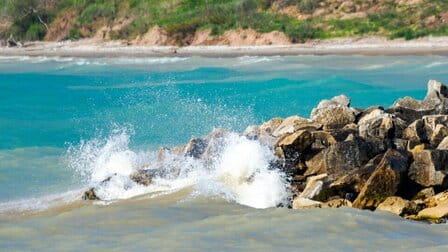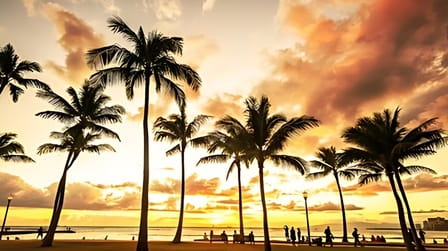The beautiful landscapes, pleasant climate, and peaceful beaches of Hawaii are sure to please any traveler. However, the islands host a rich and varied culture that should not be missed. Even though Hawaii is an American state, visitors may be surprised to learn that the state's residents practice a number of unique customs and ways of life. Vacationers should familiarize themselves with the unique characteristics of Hawaiian culture in order to make the most of their time in this paradise. Some interesting aspects of Hawaiian culture are as follows.
Learning About the Hawaiian People's Ancestry
Learning about the Native Hawaiian people's history, culture, and spiritual beliefs is crucial to getting a sense of what makes Hawaii and its people special. Polynesian immigrants carried with them a rich heritage of customs and beliefs, which adapted over time to suit their new environment.
Polynesian Travelers and Their Epic Odyssey
Ancient Hawaiians conducted an incredible voyage across the Pacific Ocean from French Polynesia, Tahiti, the Tuamotus, and Samoa many decades or perhaps centuries ago. The trip began about the year 300 CE and lasted for several centuries. They scattered out rather than leaving in a big group. After arriving in Hawaii, they took use of the area's abundance of natural resources by practicing advanced forms of fishing and farming that fed a sizable population with relative ease.
The Patriarchy of Mothers
The Hawaiians' tranquil, happy way of life was supported by a rigid matrilineal caste system. Inheritance, including property and rank (including chieftaincy), followed the female line because the system's primary focus was on social status rather than gender.
Distinct Classes Within the Caste System

Aspects of Faith and Gods
The earliest Hawaiians had a strong religious tradition that connected their interactions with the natural world and their everyday activities. As they traveled throughout the islands, they encountered new gods and came to worship them. Hawaiians may no longer pray to these deities, but they still hold a deep respect for the natural world and view time spent outdoors as a form of therapy for mental illness.
Regional Foods
Hawaii's food is one of a kind since it's a fusion of ingredients and techniques from all around the world. The food is known for its earthy, honest quality, bold attempts, ongoing evolution, and seductive flavors.
Poi, a starchy and nutrient-dense delicacy, is one of the most well-known foods. Poi, made from the taro plant that the Hawaiians brought over from Polynesia, is a sticky paste that goes particularly well with meat or fish and is made by pounding the corm and adding water.
The plate lunch is another classic dish that originated when plantation laborers began sharing their meals with one another. Macaroni salad, two scoops of white rice, and your choice of chicken katsu, poke, kalua pig, or Spam make up the standard plate lunch of today. Spam musubi from the convenience store, garlic shrimp from the food truck, or a cool shave ice are all great options for a quick snack. Finally, a meal isn't complete without a serving of fresh local fruits like pineapple, coconut, or mango.
Hula: The Performing Legacy of Hawaii
Traditional Polynesian hula is a dance set to music that recounts Hawaiian myths and legends. Traditional hula kahiko, which predates 1894, include chants performed either a cappella or accompanied by percussion instruments like the ipu and ululu.
Instruments like the ukulele, guitar, and double bass are used in modern hula, known as hula 'auana. There are variations of hula on various Polynesian islands, such as the quicker Tahitian ori and the more violent New Zealand Maori haka.
Due to the lack of a written language in ancient Hawaii, hula served as the major means of passing down oral histories and cultural practices. In hula, every step, clap, and sway has meaning and conveys a story. When performing hula, any misstep is seen as an insult to the Hawaiian gods and renders the entire dance useless.
Learn about Hawaii’s complex history through laus and Polynesian dances. Try to tell the hula apart from the other Polynesian dances by observing them closely.
Hawaiian Lei and Its Meaning
The lively culture of Hawaii is represented by the Hawaiian lei, an internationally recognized symbol. The ancient Polynesians created the first versions of the lei, which are now associated with greetings and welcoming visitors. Leis were formerly used as a symbol of social status as a token of respect and devotion between humans and their deities. Greetings, farewells, personal friendships, and love gestures were just some of the many occasions that a lei would be exchanged.
Comparing Classical and Contemporary Lei Methods and Supplies
Flowers, leaves, and ferns were some of the traditional materials used to hand-craft the lei. Materials are no longer an issue in today's advanced lei-making processes. Dollar notes are just one example of the unconventional materials utilized in today's lei. The terms "haku," "hili," "hilo," "hipu'u," "nipu'u," "humu," "humuhumu," "kui," "wili," and "haku mele" refer to eight different methods of manufacturing lei. Each method, while beautiful in its own right, requires time and practice to master.
Advice About Wearing a Lei
For both locals and visitors, receiving a lei is a memorable experience. When someone gives you a lei, it is rude to refuse it or take it off in front of them. Instead, drape it lovingly (with respect) over both shoulders so that hair falls evenly in front and back. Making your own lei or receiving one as a gift from a native Hawaiian is the greatest method to familiarize yourself with this cultural practice. It's the ideal way to express your feelings and mark a momentous occasion.
Acceptance with a smile
The people of Hawaii are known for their warm hospitality. Hawaiians are known for their warm hospitality, which is rooted in the state's tradition of treating everyone with respect and love. This is shown in the widespread adoption of the word "aloha" for both welcoming visitors and bidding them farewell. In the Hawaiian culture, the word "Aloha" means "presence of breath," which encapsulates the values of being present in the moment and treating others with kindness.
Due to their emphasis on living in peace with nature and the gods, the people of the Islands are known all over the world for their warmth and generosity.
Multiple Factors
Ancient Polynesians, Modern Mexicans, Chinese, Koreans, Puerto Ricans, Filipinos, Portuguese, Spanish, and even Main Land Americans have all left their mark on Hawaii's culture. The guiding principle is to adopt the most admirable aspects of all cultures.
The significant influx of Japanese laborers to the Hawaiian Islands in the late 19th century has left its mark on the state's culture. Hawaiian society now incorporates many facets of Japanese culture, including cuisine, art, and outlook.
Because of the influx of foreign labor, the area became a veritable crossroads of cultures. Hybrid meals and culinary traditions, such as the much-loved plate lunch, arose alongside a distinct dialect to enable communication.












